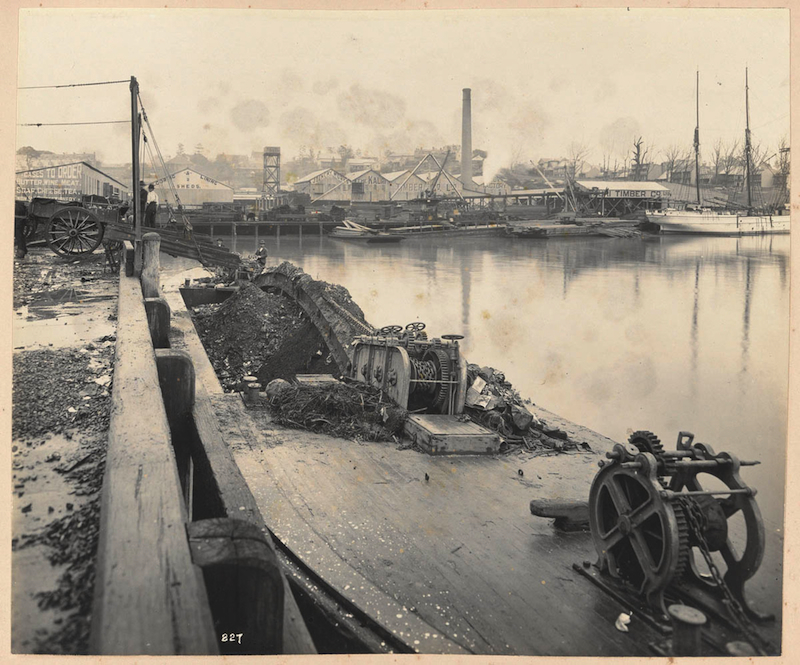Society > Waste
Sewage and Waste Management
Managing sewage and rubbish is a chore in every urban community. Pyrmont fought a life-and-death struggle on land, in the air and on the water, coping with its own sewage and rubbish from most of Sydney as well.
Darling Harbour was polluted by shipyards and jetties; Blackwattle Creek became a foul swamp as waste flowed in from factories, abattoirs, chemical plants and timber yards.
On land, Pyrmont’s domestic sewage had to find its own way from tumble-down cottages down streets and alleys to the harbour – and from the 1850s a sewage trench brought contributions from Redfern to Blackwattle Bay.
And the air was thick with smoke from factories, and then from the coal-burning power-stations, not to mention the stench of the swamps and the burning of industrial and domestic waste. Inspectors confessed that it was impossible for residents to keep their houses, their children or themselves clean. The effects on health are easy to imagine and impossible to describe.
Remedies were slow to develop. Land reclamation could not clean up Blackwattle Bay; environmental controls did not curb water-borne industrial waste until well into the 20th century, and soot billowed from power stations until the 1970s. Waste was burned informally in old quarries and formally in open “destructors” until the Burley Griffin Incinerator was built in the 1930s. Pyrmont did not achieve an adequate physical environment until the end of the 20th century.
Source
Related Items
Blackwattle Bay-Rozelle Bay Precinct 1810
Newtown garbage tip punt, Blackwattle Bay
Pyrmont refuse destructor Saunders St 1933
Pyrmont Incinerator c1935
Blackwattle Bay-Rozelle Bay Precinct 1990





